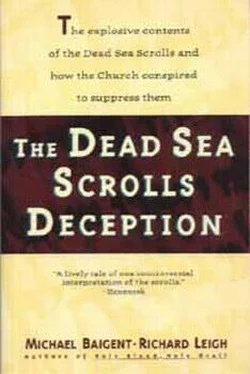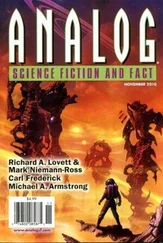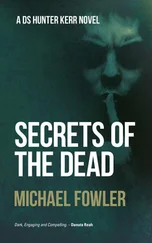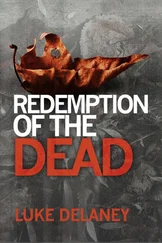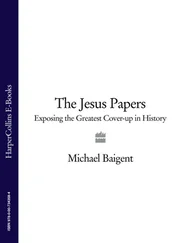9. Callaway, The History of the Qumran Community, p.45.
10. Milik, Ten Years of Discovery in the Wilderness of Judaea, p. 52.
11. De Vaux, ‘Fouilles au Khirbet Qumran’, p.233. This article appeared in 1954.
12. De Vaux, in New Testament Studies, vol.xiii (1966-7), p. 104.
13. De Vaux, ‘Les Manuscrits de Qumran et l’archeologie’, p. 100.
14. Cross, The Ancient Library of Qumran, p.47.
15. Roth, ‘Did Vespasian capture Qumran?’, p. 124.
16. De Vaux, L’archeologie et les manuscrits de la mer morte, p.32, n.1; Archaeology and the Dead Sea Scrolls, p.40, n.1. In addition, it is worth noting that in the absence of any complete publication of de Vaux’s excavation results certain doubts linger about all his coin discoveries. The Israeli coin expert Ya’acov Meshorer told Eisenman that neither he nor anyone else he knew had ever seen de Vaux’s coins. Eisenman, Maccabees, Zadokites, Christians and Qumran, p.93, n.173. See also p.94, n.175 for the so-called ‘10th Legion’ coin.
17. De Vaux, Archaeology and the Dead Sea Scrolls, p.67.
18. Ibid., pp.19, 22, 34, 37, 44-5. It is difficult to be precise about the exact numbers of coins found and their identification until the long-delayed publication of de Vaux’s final report on the excavation. The archaeological reports published in Revue biblique have, by de Vaux’s own admission, been incorrect with regard to the coin identification. See ibid, p. 19, n.3.
19. Ibid., p. 109.
20. Eisenman, op. cit., p.34.
21. Ibid., p.92 (n.168).
22. De Vaux, op. cit., p.43.
23. Driver, op. cit., p.396.
24. Ibid., p.394.
25. De Vaux, in New Testament Studies, vol.xiii (1966-7), p.99, n.l.
26. Danielou, The Dead Sea Scrolls and Primitive Christianity, pp.121—2.
27. De Vaux, Archaeology and the Dead Sea Scrolls, p. 28. See also Eisenman, op. cit., p.94, n.174.
28. Cross, op. cit., p.51.
29. Driver, op. cit., p.397.
30. Golb, ‘The Dead Sea Scrolls’, p. 182. In Science Times, 21 November 1989, p.C8, Golb said of Qumran, ‘There’s nothing to show it was anything but a fortress.’
31. Golb, ‘The Problem of Origin and Identification of the Dead Sea Scrolls’, p.5.
32. Cross, op. cit., pp.86-7.
33. Cross, ‘The Development of the Jewish Scripts’, in Wright, The Bible and the Ancient Near East, p. 135. See also Eisenman, op. cit., pp.28-31; p.82, n.155; p.84, n.156 and n.157; p.86, n.158 and n.159; p.87, n.l61;p.88, n.163.
34. Cross, ibid., p. 191, n.20.
35. Birnbaum, The Hebrew Scripts, p. 130. This was first pointed out by Eisenman, op. cit., p.85 (n.157).
36. Eisenman, op. cit., p.85 (n.157).
37. Davies, ‘How Not to do Archaeology: the Story of Qumran’, p. 206.
38. Eisenman, op. cit., p.29.
39. Ibid., p.30.
40. Eisenman to authors, 7 July 1990.
41. Roth, ‘The Zealots and Qumran: The Basic Issue’, p.84.
1. The main classical references to the Essenes are found in: Josephus, Life; The Jewish Wars, II, viii; Antiquities of the Jews, XVIII, i Philo Judaeus, Every Good Man is Free, XII-XIII; Hypothetica, 11 Pliny, Natural History, V, xv.
2. Josephus, The Jewish Wars, II, viii.
3. Josephus, Antiquities of the Jews, XV, x.
4. Josephus, The Jewish Wars, II, viii.
5. Josephus, Antiquities of the Jews, XV, x.
6. Ibid. This close relationship between the Essenes of Josephus’ description and King Herod the Great was explored in detail in Eisenman, ‘Confusions of Pharisees and Essenes in Josephus’, a paper delivered to the Society of Biblical Literature Conference in New York, 1981.
7. Josephus, The Jewish Wars, II, viii.
8. Quoted by Dupont-Sommer, The Essene Writings from Qumran, p. 13.
9. Ibid.
10. Cross, The Ancient Library of Qumran, pp.37- 8.
11. The standard elaboration of the consensus hypothesis is in de Vaux, Archaeology and the Dead Sea Scrolls, pp.3-45.
12. Josephus, The Jewish Wars, II, viii.
13. Philo Judaeus, Every Good Man is Free, XII.
14. De Vaux, Archaeology and the Dead Sea Scrolls, pp. 12-14.
15. Josephus, Antiquities of the Jews, XV, x. See also on this, Eisenman, James the Just in the Habakkuk Pesher, p. 79.
16. Philo Judaeus, Every Good Man is Free, XII.
17. Cross, The Ancient Library of Qumran, p.51.
18. Philo Judaeus, Every Good Man is Free, XII.
19. Vermes, ‘The Etymology of “Essenes” ‘, p.439. See also Vermes, The Dead Sea Scrolls: Qumran in Perspective, p. 126.
20. Eisenman, Maccabees, Zadokites, Christians and Qumran, p. 6.
21. Ibid., p. 108 (Derech, ‘ the Way’; ma’aseh, ‘ works’/’acts’); p. 109 (Tamimei-Derech, ‘ the Perfect of the Way’; Tom-Derech, ‘ Perfection of the Way’). See also the discussion on p.41, n.17.
22. Ibid., p. 109.
23. Epiphanius of Constantia, Adversus octoginta haereses, I, i, Haeres xx (Migne, 41, col.273).
24. Eisenman, op. cit., p. 44, n.30.
25. Black, ‘The Dead Sea Scrolls and Christian Origins’, in Black, The Scrolls and Christianity, p. 99.
26. Eisenman, James the Just in the Habakkuk Pesher, p.99 (Nozrei ha-Brit).
27. Ibid., pp.vii-x.
28. The Habakkuk Commentary, XII, 7ff. (Vermes, p. 289).
12. The Acts of the Apostles
1. Eisenman, Maccabees, Zadokites, Christians and Qumran, pp. xiii, 4—6.
2. Josephus, Antiquities of the Jews, XVIII, i. See also ibid., p.59, n.99.
3. Eisenman, op. cit., pp. 10-11, 22-3. For arguments regarding the ‘Stephen’ episode being a reworking of an attack upon James as recorded in the Recognitions of Clement (I, 70), see p.76, n.144, and also James the Just in the Habakkuk Pesher, p.4, n.ll; p.39.
4. Eisenman, Maccabees, Zadotites, Christians and Qumran, p. 41, n.17.
5. Ibid., p.68, n.120; p.69, n.122. Eisenman sees both ‘Damascus’ references as generically parallel.
6. The Community Rule, VI, 14-23 (Vermes, p.70). The sense is not entirely clear: this novitiate period was at least two years with the third year being the first of full membership; or, the novitiate itself took three years with the fourth year being the first of full membership. See Vermes, The Dead Sea Scrolls in English, p. 7.
7. Eisenman, James the Just in the Habakkuk Pesher, pp. 30-32.
8. Eisenman points to the psychological attitude demonstrated in Paul’s first letter to the Corinthians where he, among other precepts, explains the necessity of ‘winning’:
So though I am not a slave of any man I have made myself the slave of everyone so as to win as many as I could. I made myself a Jew to the Jews, to win the Jews… To those who have no Law, I was free of the Law myself… to win those who have no Law… All the runners at the stadium are trying to win, but only one of them gets the prize. You must run in the same way, meaning to win. (1 Corinthians 9:19-27).
9. Eisenman, James the Just in the Habakkuk Pesher, pp. 30-32.
10. Ibid.; see also p.57, n.39 (where Eisenman reviews Paul’s ‘defamation of the Jerusalem leadership’ in his letters).
11. The Damascus Document, XV, 12-14 (Vermes, p.92).
12. Acts 23:23 states unequivocally that there were 200 soldiers, 200 auxiliaries and 70 cavalry as the escort.
Читать дальше
